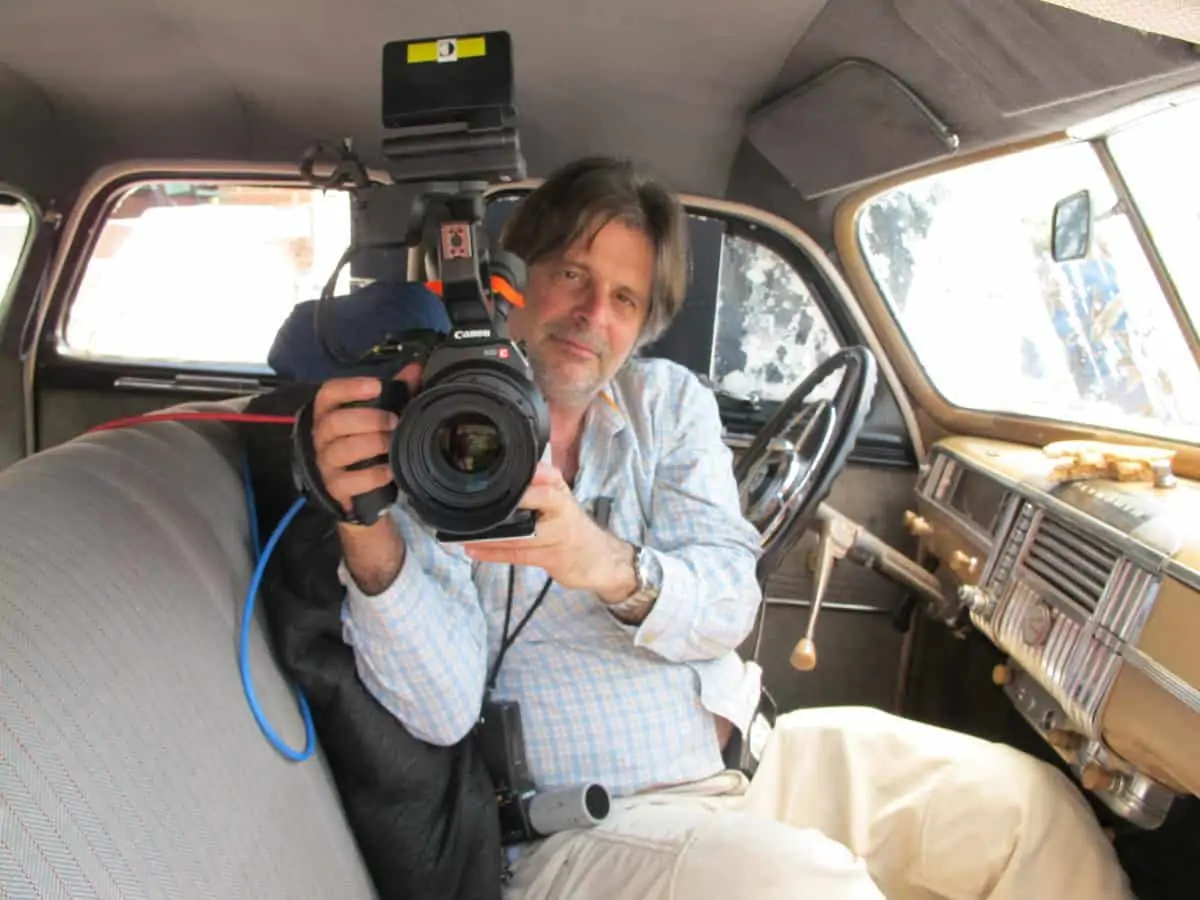Mission critical
James Neihouse ASC / A Beautiful Planet
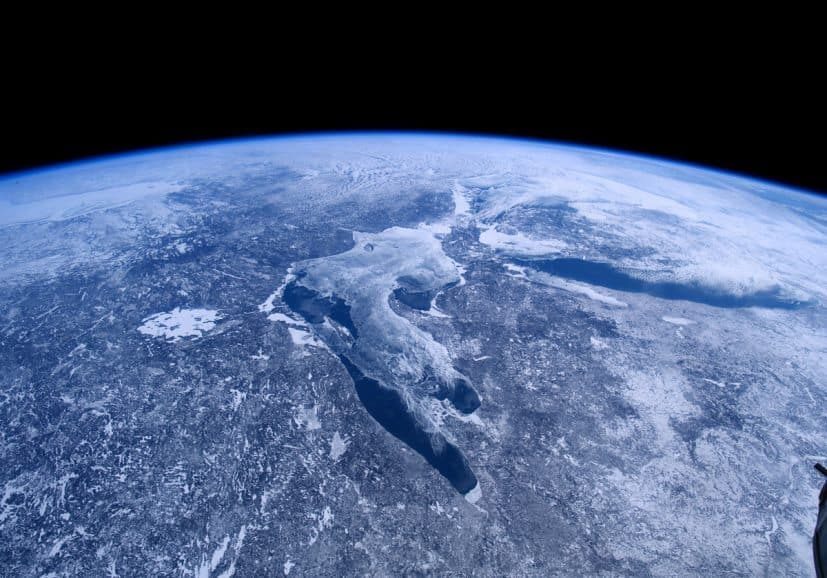
Mission critical
James Neihouse ASC / A Beautiful Planet
BY: Ron Prince
A Beautiful Planet delivers a breath-taking portrait of the Earth from space, and provides a unique perspective of our planet and the galaxy beyond.
The 46-minute show, the first digital production in space, was made by IMAX Entertainment in cooperation with the National Aeronautics & Space Administration (NASA). It was written, produced, directed and edited by Toni Myers – the acclaimed filmmaker behind the celebrated IMAX documentaries Blue Planet, Space Station 3D (2002) and Hubble 3D (2010).
With narration by Jennifer Lawrence, A Beautiful Planet features stunning footage of the planet and the effects that humans have had on it over time. This otherworldly view is purposely designed to cause viewers to reflect upon the intensity of human expansion and to think about how we might protect the planet we all call home henceforward.
Footage for the production was captured by several astronauts – Barry (Butch) Wilmore, Terry Virts, Scott Kelly and Kjell Lindgren – during their overlapping flights aboard the International Space Station (ISS). Each had undergone earth-bound training on the ISS replica at NASA, in Houston, by cinematographer James Neihouse ASC, with support from former astronaut Marsha Ivins, who oversaw space operations.
With over 35 IMAX productions under his belt, Neihouse, can easily be considered the go-to-guy for shooting large format, particularly in airless environments. He has a long professional history with Myers too. After graduating from Brooks Institute of Photography in 1976, he started as a camera assistant on Ocean in 1977, which was edited by Myers. His stellar career has since included the cinematography for Space Station 3D and Hubble 3D, both made by Myers, and both earning him top cinematography awards from the Giant Screen Cinema Association.
“I am perhaps the only DP in the world who actually has to train the camera crew how to shoot, whilst also planning location shoots that I can never attend,” laughs Neihouse. “But, I adore making movies, particularly the challenge of space and underwater productions, and I could hardly ask for a more exciting job. It’s certainly different when I’m out and about, perhaps doing a mundane chore, and get I a call on my mobile from space asking about the framing of the Nile Delta.”
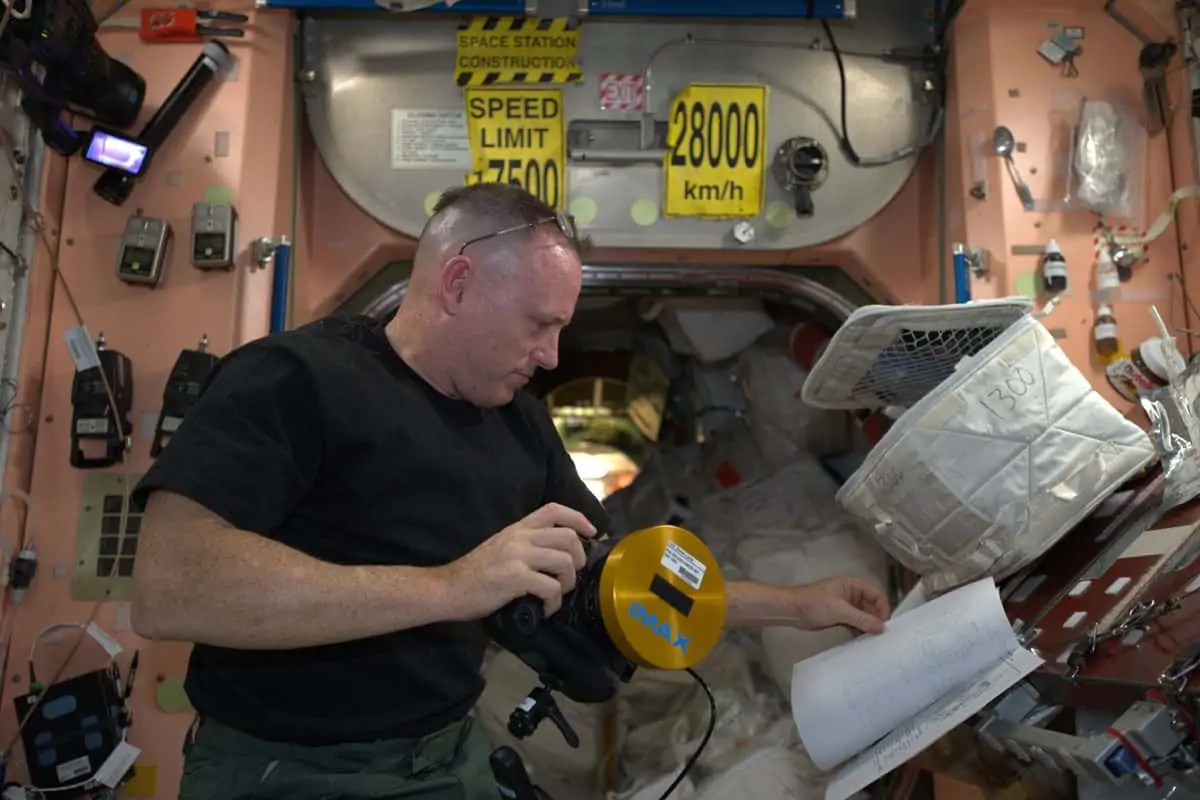
Shooting in space can be problematic. Chief considerations for Neihouse included: the increased background radiation found at 250 miles above the earth’s surface, and its effects on digital production equipment; physical equipment handing and cinematographic framing in zero gravity; getting the footage safely back down to earth; not to mention the communication with, and coordination of, a permanently remote team, that has plenty of other responsibilities.
Neihouse says that idea for A Beautiful Planet kicked off as long ago as 2009, and that camera testing started officially in February 2012.
“We wanted to find the closest digital camera and lens equivalent to 65mm film negative and the 1.43:1 aspect ratio of IMAX on the big screen,” he says, whilst being fully-aware that any technology choices would also demand rigorous testing and official certification from NASA, adding the best part of a year to the pre-production schedule.
Unlike most modern productions, where softening the digital image, especially of actors, is a necessity, this production needed the images to be as sharp and clean as possible. Pooling the very latest digital cinematography cameras for side-by-side testing at NASA’s training facility, the top runners for the production at that time included: Sony F65, Phantom 65, ARRI Alexa M (because of its 4:3 aspect ratio), RED Epic and Canon C300, plus a range of DSLRs. A key task was to match the lens focal length and field-of-view between each of the different sensors, so that each camera would yield the same size image, and ultimately match the 40mm Hasselblad lens used with traditional IMAX cameras.
Taking into consideration physical size and power consumption, as well as practical advice from the crew members on previous ISS flights about equipment handling and general ease-of-use, the choice was slimmed down to the RED Epic and Canon C300. Neihouse says he was aware of the imminent arrival of the 4K Canon C500, and that by good fortune in timing and a predilection for the more pleasing cinematic looks provided by Canon processing, his final camera selection ended up being the C500, along with a Canon 1D C DSLR, with 12mm ARRI Master Prime and 15.5-47mm Canon CineZoom lenses on the C500; 14mm and 24mm Canon Cine Primes were used on the 1DC.
Knowing that digital sensors can suffer from dead pixels in space, three C500 bodies were sent up in separate ISS supply flights – in September 2014, Jan 2015 and April 2015.
“You can never really know what the radiation damage is going to be, and whilst dead pixels can be fixed fairly easy in post, it’s best to be able to switch bodies when the dead pixel count hits the 30K mark,” he says. Lens are pretty much impervious to space travel.
Shooting in space can be problematic. Chief considerations for Neihouse included: the increased background radiation found at 250 miles above the earth’s surface, and its effects on digital production equipment; physical equipment handing and cinematographic framing in zero gravity; getting the footage safely back down to earth; not to mention the communication with, and coordination of, a permanently remote team, that has plenty of other responsibilities.
Neihouse says that idea for A Beautiful Planet kicked off as long ago as 2009, and that camera testing started officially in February 2012.
“We wanted to find the closest digital camera and lens equivalent to 65mm film negative and the 1.43:1 aspect ratio of IMAX on the big screen,” he says, whilst being fully-aware that any technology choices would also demand rigorous testing and official certification from NASA, adding the best part of a year to the pre-production schedule.
Unlike most modern productions, where softening the digital image, especially of actors, is a necessity, this production needed the images to be as sharp and clean as possible. Pooling the very latest digital cinematography cameras for side-by-side testing at NASA’s training facility, the top runners for the production at that time included: Sony F65, Phantom 65, ARRI Alexa M (because of its 4:3 aspect ratio), RED Epic and Canon C300, plus a range of DSLRs. A key task was to match the lens focal length and field-of-view between each of the different sensors, so that each camera would yield the same size image, and ultimately match the 40mm Hasselblad lens used with traditional IMAX cameras.
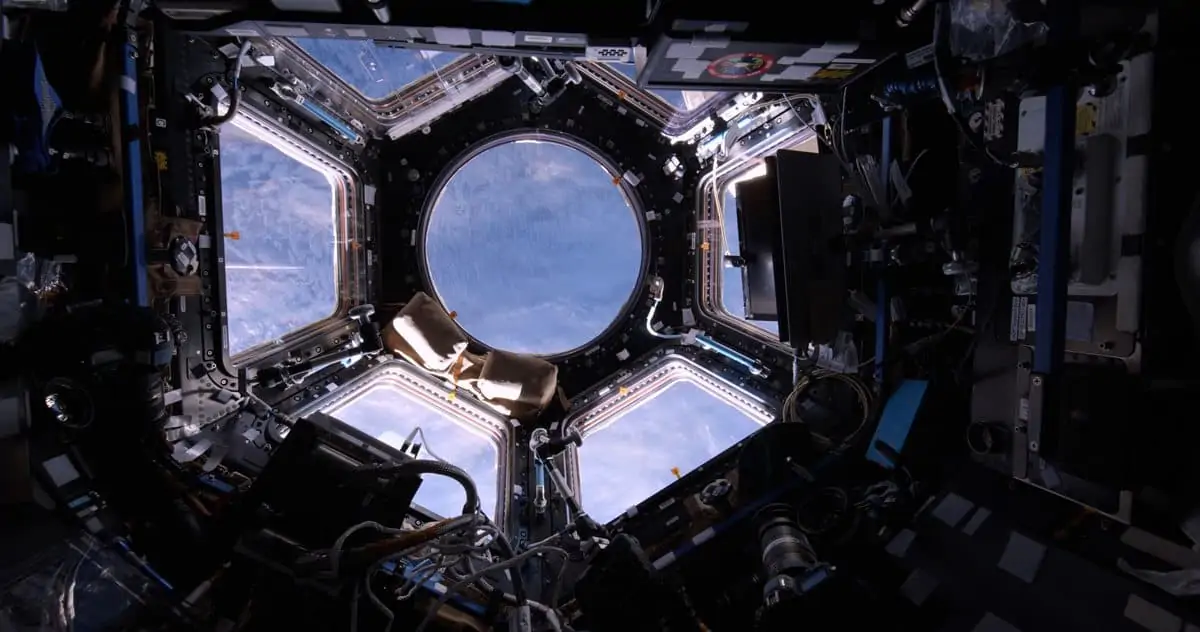
"We wanted to find the closest digital camera and lens equivalent to 65mm film negative and the 1.43:1 aspect ratio of IMAX on the big screen, whilst being fully-aware that any technology choices would also demand rigorous testing and official certification from NASA."
- James Neihouse ASC
Taking into consideration physical size and power consumption, as well as practical advice from the crew members on previous ISS flights about equipment handling and general ease-of-use, the choice was slimmed down to the RED Epic and Canon C300. Neihouse says he was aware of the imminent arrival of the 4K Canon C500, and that by good fortune in timing and a predilection for the more pleasing cinematic looks provided by Canon processing, his final camera selection ended up being the C500, along with a Canon 1D C DSLR, with 12mm ARRI Master Prime and 15.5-47mm Canon CineZoom lenses on the C500; 14mm and 24mm Canon Cine Primes were used on the 1DC.
Knowing that digital sensors can suffer from dead pixels in space, three C500 bodies were sent up in separate ISS supply flights – in September 2014, Jan 2015 and April 2015.
“You can never really know what the radiation damage is going to be, and whilst dead pixels can be fixed fairly easy in post, it’s best to be able to switch bodies when the dead pixel count hits the 30K mark,” he says. Lens are pretty much impervious to space travel.
Having made this camera selection, in terms of workflow, in-built CF cards would be used to transfer the Canon RAW CR2 files from the Canon 1D C camera, along with 1080p proxy footage from the C500. A specially-modified Codex recorder was used to capture the 4K Canon RAW uncompressed footage directly from the C500.
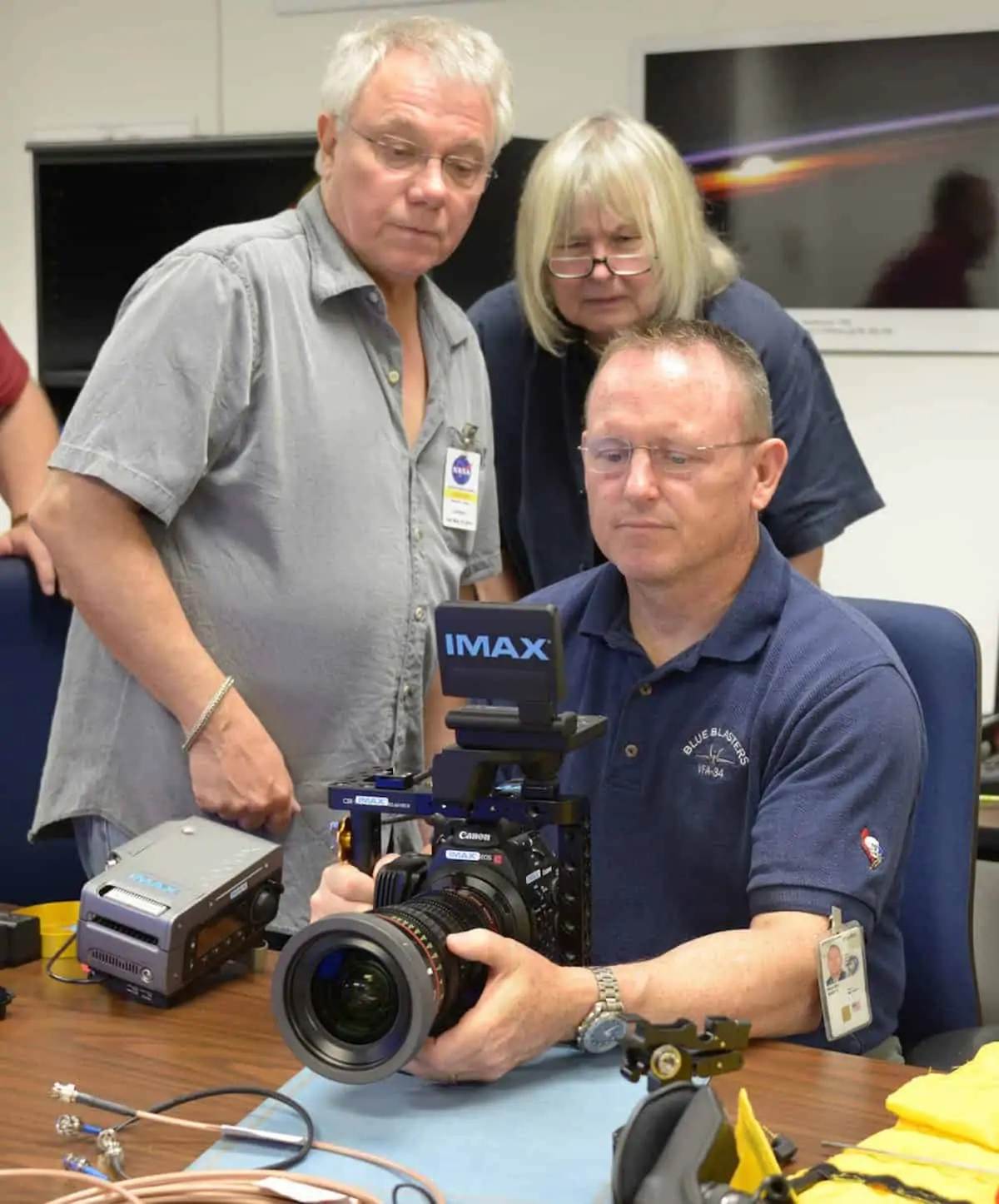
The production took advantage of the ISS’s robust data downlink to transfer the 1080p material to a secure server at NASA, before it was transferred to editorial at Technicolor in Toronto. The Codex drives, containing the 4K RAW footage, were ferried down separately by returning Dragon shuttles landing at sea in the Pacific. These drives were then collected from SpaceX in Long Beach, California, and taken to Codex in LA where the material was QC’d and copied to LTO, before being dispatched to Toronto for the online edit. Neihouse says the production used 50 CF cards and 12 Codex Disk Packs.
As part of NASA’s certification requirement, the camera and workflow equipment was sent for radiation testing at a special facility at the University of Indiana.
“We bombarded it like hell, and gave it the equivalent of one year of radiation in three seconds – around 10,000 X-rays,” Neihouse recalls. “Although the Codex shut down immediately, there was absolutely no data loss at all from any of the Disk Packs or CF cards, which calmed our concerns. In fact, the Codex gear, which is still in orbit, worked without any problem at all throughout the production, and the Codex team was excellent with support.”
NASA gave the go-ahead to put the cameras on the ISS, and allow the astronauts shoot for the production, in 2014. Neihouse says that training time averaged-out to 25 hours per crew member.
He notes: “In many respects, they are super humans and they picked up the technicalities really fast. We were lucky that the guys who shot for us had a natural eye and were quick to learn what we wanted cinematographically.”
Shooting on the ISS took place chiefly from a seven-window observation dome, known as the Cupola, which faces Earth, with the astronauts and cameras strapped into place to eliminate handheld movement in zero gravity conditions.
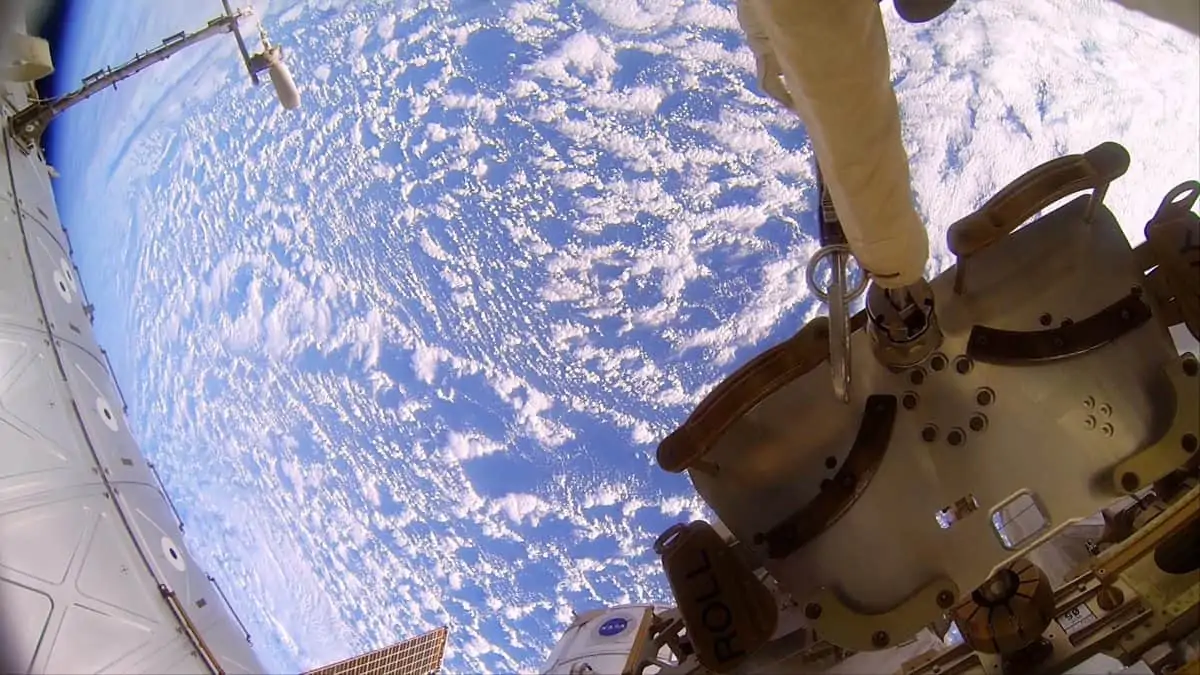
He says the shooting requirement was basically a shopping list of 150 Earth targets – such as river deltas, cities, island and volcanoes. With the ISS circling the earth 16 times per day, at rate of 17,100mph, this was achieved accurately through dedicated liaison with both NASA’s Earth Observation department and continual contact with the different camera-wielding astronauts, over a 16-month period.
Whilst Neihouse has overseen a lot of footage from outer space, he says the ability to shoot at night with digital cameras delivered particularly impressive results.
“We were blown away with night-time images of Moscow, the multitude of fishing boats in the sea near Bangkok, and the border between North and South Korea – the south is full of light, whilst the north is pitch black, apart from a feeble glow emanating from Pyongyang. Shots of the aurora borealis, the Milky Way and distant star fields are images that we’ve never captured with such impressive detail before.”
As for the massage of the movie, he says, “If mankind is to survive, then we must reach out beyond the our solar system. When you consider the nearest habitable planet is probably 500 light years away, then we might want to think more seriously about taking better care of this one for a little longer. We’re also learning more and more about shooting in space, and I hope next time it’ll be an 8K shoot.”


